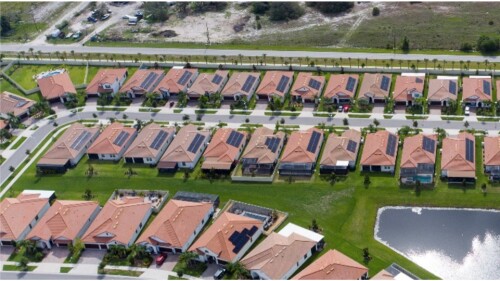Topics
Capital Markets and Finance
Real estate economists predict solid performance by U.S. property markets over the next three years, according to the spring 2022 ULI Real Estate Economic Forecast. This is in spite of predictions of rising inflation and slower economic growth as a result of the Russia/Ukraine conflict and other developments. While the real estate–related components of the forecast are generally positive, contributing economists downgraded near-term economic growth and predicted significantly higher inflation and interest rates during the forecast period (2022–2024) compared with the prior forecast.
At the 2022 Spring Meeting in San Diego, panelists shared some of the opportunities they see in Mexico, while addressing some of the perceived challenges, both real and imagined.
A panel of capital markets experts opened the 2022 ULI Spring Meeting with a discussion of the direction of global markets and capital flows in an environment of rising interest rates as well as global uncertainty such as the ongoing conflict in Ukraine.
Design & Planning
With an increasing shortage of housing across the United States driving up home prices and rents, communities and developers need to adopt a broader strategy. Important part of that approach will be infill development, adaptive use, and changes in zoning regulations to encourage the development of so-called “missing middle” buildings with multiple units that younger couples and families can afford to purchase, according to speakers at a recent housing conference.
Boosting livability is at the heart of Bangkok’s ambitions to thrive and develop as a global city, Governor Chadchart Sittipunt said in a dynamic presentation to ULI Asia Pacific’s REImagine conference. The governor explained that livability was the Thai capital city’s target because it is key to attracting and keeping global talent.
Six developments from around the world have been selected as winners of the 2022 ULI Global Awards for Excellence. This year’s winners include two from North America, two from Europe, and two from the Asia Pacific region.
Development and Construction
Top experts share innovative programming and latest strategies to fund development.
In March, ULI member leaders based in Shanghai, China, engaged in a discussion on how China’s real estate market has been recovering since end of the “zero COVID” policy in December.
Urban Landmagazine sat down with Collete English Dixon, executive director of the Marshall Bennett Institute of Real Estate, and administrative chair, real estate, at the Heller College of Business at Roosevelt University in Chicago for a wide-ranging conversation on diversity and inclusion, how far the industry has come, and what the future paths to success could look like in a diverse industry.
Resilience and Sustainability
Over the last decade, real estate leaders have started to wrap the industry’s arms around what climate change—and the energy transition associated with it—means for the industry. Real estate companies with net zero commitments now account for nearly $1 trillion in market capitalization—well over half of the market cap of all publicly traded REITs. But setting targets is just the start. We’re learning a lot from those leaders moving beyond commitments to the hard work of transforming physical assets.
Real estate developers across the United States and around the world are under pressure to cut the amount of carbon their activities put into the atmosphere.
As global momentum builds for climate action, federal, state, and local governments have introduced building-sector requirements covering everything from energy and water use to green building certifications to climate resilience. The real estate industry is addressing the climate crisis through actions like selecting lower-carbon materials, setting portfolio-wide net zero targets, and increasing procurement of renewable energy. However, ESG teams are spending more of their time on compliance and reporting as regulations expand, which reduces their capacity for implementing projects and reducing carbon.
Issues and Trends
Third edition evaluates top 30 global powerhouses report reveals world’s leading urban hubs rise in popularity post pandemic. Challenges include new economic conditions, rising costs, adaptation to hybrid work, innovation gaps, the climate imperative, and transition to social, mixed-use districts.
Guy Kawasaki—chief evangelist at Canva, former chief evangelist for Apple, and bestselling author—summed up insights gleaned from his years in tech and as host of the Remarkable People podcast, interviewing such luminaries as Margaret Atwood, Tony Fauci, Jane Goodall, and Steve Wozniak.
As congregations across North America grapple with shrinking membership and aging facilities, a new opportunity is emerging: transforming faith-owned land into affordable housing and community-serving spaces. At the 2025 ULI Fall Meeting in San Francisco, panelists in the session “Spiritual Brownfields: Declining Congregations and Opportunities for Housing on Faith-Owned Land” explored how churches and developers are partnering to bring mission-driven housing to underused sacred sites.











